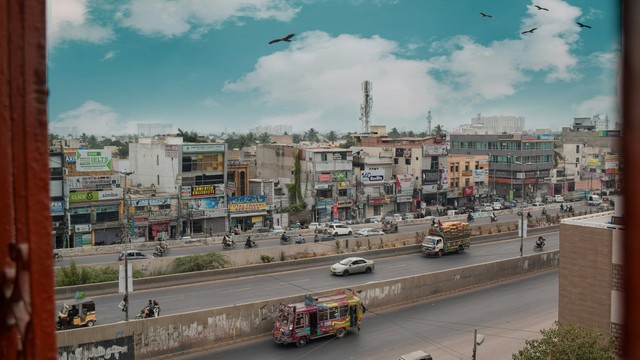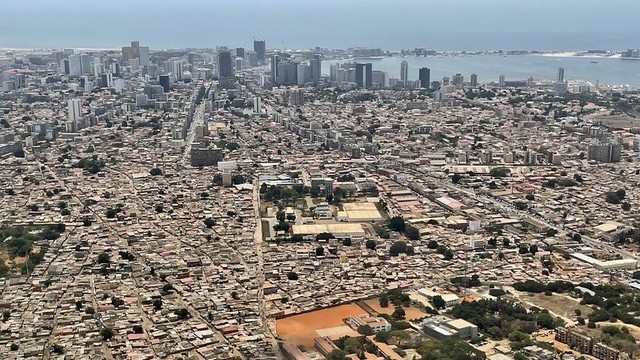Karachi, informal settlements and COVID-19
From Karachi, guest blogger Arif Hasan reports on how the city’s informal settlements are managing the COVID-19 lockdown and discusses how existing government structures can support the city’s settlements during COVID-19 recovery, and beyond.


Pathan Colony, Orangi Town, Karachi. Organised communities within informal settlements have been able to access relief packages more easily and, because they have established trust, distribute that relief more easily and effectively (Photo: copyright Orangi Pilot Project Research and Training Institute (OPP-RTI))
Karachi is Pakistan’s largest city, with a population of about 17.5 million, of which 2.5 million are political, economic, or illegal migrants. Fifty percent of this population lives in informal settlements most of which were originally 80-120 square metre lots and a single storey in height.
Today, many of these settlements have become medium- to high-rise apartments of 25-40 square metres. Their density varies between 1,000 to 3,500 persons per hectare against an overall Karachi density of 240 persons per hectare. Each has a density of six to eight persons per apartment.
The original single-storey settlements house extended families of 12-15 persons with a shared toilet. In many other locations, male-only accommodation for day wage labourers houses 10-15 persons in the same room and up to 20 persons share a toilet. Almost all these settlements have piped water connections, but supply is erratic and they often have to dispense money for water from tankers to augment it.
Almost half the population works within the settlements, servicing residents’ day-to-day needs through informal private sectors including health, education and transport. There is also an informal industrial sector and lots of small businesses.
The rest of the population works in the city, in the formal industrial, financial, hospitality, transport, and street economy related sectors. Many men and women are domestic workers for better-off families. Most employees in these sectors work on contracts and as such there is little or no job security. A very large number of employees have already been laid off.
Virus prompts urban exodus
COVID-19 descended on Karachi’s vulnerable informal settlements in the last week of February. And in the first week of March the provincial government imposed a strict 15-day lockdown followed by another 15 days.
The announcement triggered a mass exodus of male migrants working as contract employees and day-wage labourers, back to rural areas, mostly to Khyber Pakhtunkhwa in Pakistan’s north-western region. But this wave was arrested as the provincial government sealed the provincial boundaries, offloading passengers from vehicles and confiscating the containers with people smuggled inside.
We do not know how many were infected by the virus during this mass movement, nor the number that managed to leave the city. Hence we do not know how many workers remain, and what this means for the functioning of the city.
The persons who are likely to have migrated are porters at the wholesale markets, waiters in hotels and restaurants, contract industrial labour, domestic workers, and caretakers of various residential and commercial premises and non-resident electricians and plumbers.
Along with the lockdown, the government aggressively promoted social distancing and hand washing. But social distancing cannot be practiced in informal settlement residences given their extraordinarily high densities, although in many public spaces it was made possible through bullying by the law enforcement agencies.
In the narrow lanes of the katchi abadis settlements, children played cricket, men played cards and women gossiped in groups. With large numbers unable to follow social distancing, the majority of those infected in District South of the city belong to katchi abadis and have been infected locally.
But in the middle-income and elite areas of the city, social distancing has been followed. Statistics suggest that here, transmission rates are considerably lower.
Communities self-organise to get rations to the most vulnerable
The lockdown’s impact on livelihoods of those living in informal settlements were quickly recognised and people donated generously. Ration parcels consisting of flour, rice, sugar, cooking oil, and tea were distributed to families of six to cover a period of 7-10 days.
But the process soon ran into trouble. Communities pointed out that many well-off households were also receiving rations. And when there were not enough packages to go round, those who did not receive them protested, sometimes in an ugly manner.
In response, many organisations discontinued distributing the packages and gave them instead to temples, churches, and mosques, from where people could pick them up. There were still some accusations of distribution based on preference, although fewer.
Where communities within informal settlement are well organised, they often have stronger links with civil society and government organisations and with political parties and can access relief in bulk more easily.
And it is interesting to note that these communities implemented the same formula for distribution: households with members who had permanent jobs were not given any rations; those that had successful businesses were given 50% of the ration; day wage labourer and those living in extreme poverty were given 100%.
No one complained about these transactions since the office bearers of the community and the elders trusted those distributing the packages and that they knew who was eligible.
Government provides grants, but prompts questions for the longer term
Meanwhile, the government provided a grant of Rs 42 billion to the seven million women who were listed in the state’s poverty alleviation programme and an additional 12 thousand rupees to a further 12 million families on the list. So far, it is not clear whether this will be followed by another payment next month.
The percentage for Karachi eligible for these programmes was very small and for the Rs 12,000 programme, people had to have some knowledge of information technology to be able to access these benefits online and also undergo biometric verification, which was not always easily available.
But civil society organisations cannot provide relief indefinitely. There are already signs of fatigue and a lack of resources. Government support to families has already cost 144 billion rupees. Will the state be able to continue providing this huge amount? There are serious sustainability issues here.
Towards urban equality, post-COVID: bolstering Karachi’s Union Council
Drawing from the above lessons, the Urban Resource Center (URC) Karachi has proposed that the Union Council (UC), which is the lowest rung of local government and which is usually ignored, should be developed and made proactive by higher levels of government. All relief could be distributed through it.
Its structure is well suited for this purpose. Each UC is divided into four wards, each represented by a counsellor and two counsellors for women affairs and one each for labour, youth, and minorities. In addition, there is a chair and a vice chair of the UC and a 16 grade officer of the local government is the secretary to the UC.
The UC already has lists of the residents of the UC and further details regarding skills and earnings are readily to hand.
The UC should not be limited to providing relief. Post-COVID-19, millions of Karachiites will be unemployed and thousands will lose their businesses. At that stage, a revitalised UC can, with the involvement of community institutions, launch a government-funded work programme to physically improve UC and establish sustainable health, education and IT related programmes which build on what exists.
It is estimated that such programmes for the first year will be able to fulfil the job requirements of the UC populations. The cost of an effective works programme should work out to Rs. 120 million.
The Urban Resource Center feels that, in the long run, a revitalised UC would be the best guarantee for building an environmentally friendly and equitable city. The virus offers us an opportunity, and we should grab it.
The next blog in the series will be by Selvi Manivanan Devandra, a community leader with Mahila Milan, the federation of women’s savings groups, and will focus on responding to COVID-19 in a high density low-income district in Mumbai.



